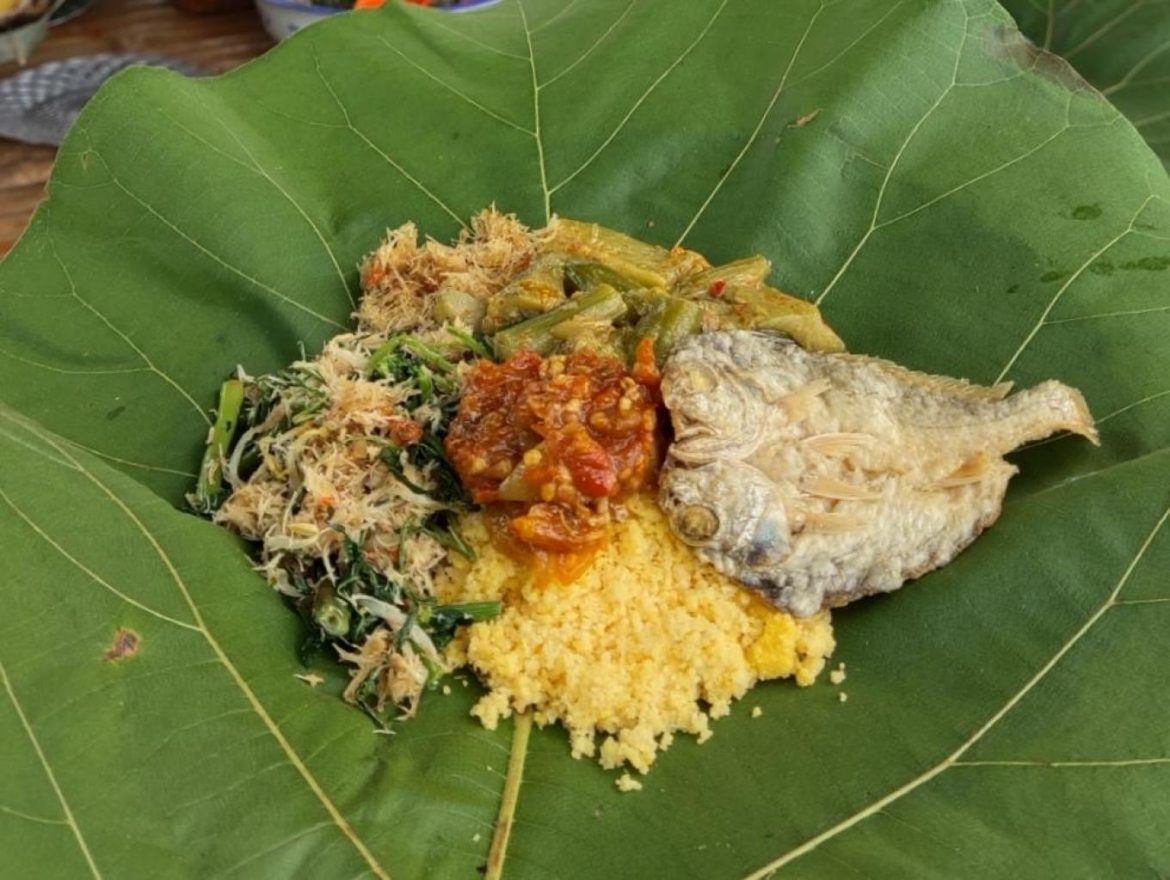Have you ever heard the story of corn rice, or as it's more familiarly known as ampok rice?
Many associate it with the risk of diabetes due to its high sugar content that is difficult for the body to digest.
However, corn rice is actually typical food of Blitar which has been the mainstay of the community since colonial times.
In those days, fighters had to endure months on the battlefield or in hiding with limited food supplies.
In such a situation, an economical and long-lasting food source is needed. That is why, people at that time relied on their creativity to use available crops as provisions, including the abundant corn.
Nasi ampok, which is a substitute for rice, is made with the same cooking process.
In times of famine, ampok rice becomes the main alternative for farmers as rice yields are low or non-existent.
Despite its simplicity, ampok rice has a delicious flavour, especially when served with tomato sambal, sayur urap-urapan and salted fish.
You can find them easily around Blitar square at an affordable price.
Although it seems traditional, this ampok rice has many health benefits, including the following:
- Complex Energy Sources
Corn rice contains complex carbohydrates as the body's main source of energy, as opposed to simple carbohydrates that can cause blood sugar spikes.
The complex carbohydrates in maize rice are digested slowly, maintaining satiety and distributing energy stably.
- Maintaining Digestive Health
The high fibre content in corn rice is essential for maintaining digestive health.
Fibre helps move food waste through the intestines efficiently, preventing constipation and other digestive problems.
- Maintaining Blood Sugar Levels
For people with diabetes or those who want to control their blood sugar levels, corn rice can be a solution.
The fibre in corn rice helps regulate the release of glucose into the bloodstream, keeping blood sugar levels stable.
- Improves Heart Health
Monounsaturated fats in corn rice are beneficial for heart health. These fats help lower LDL (bad cholesterol) levels and increase HDL (good cholesterol), reducing the risk of heart disease.
- Nourish the Eyes
Corn rice contains lutein and zeaxanthin, a carotenoid antioxidant which maintains eye health.
These substances help protect the eyes from macular degeneration and cataracts that usually occur with age.
- Plant-based Iron Sources
As a good source of plant-based iron, maize rice helps in the formation of red blood cells and prevents iron deficiency anaemia.
- Maintain Bone Health
The phosphorus content in corn rice is important for bone health and density.
Phosphorus also supports the absorption of calcium, an important mineral in the formation of strong bones, preventing osteoporosis.
- Boosts the Immune System
Corn rice contains vitamin C and antioxidants that support the immune system.
This helps the body fight infections and diseases more effectively.
- Helps to Lose Weight
The high fibre in maize rice helps to control appetite and reduce calorie intake, useful for those who are losing weight.
- Potential to Prevent Cancer
Research shows that the fibre in corn rice can reduce the risk of colon cancer, and phenolic acids such as ferulic acid can fight tumour growth.
Based on this explanation, it is clear that maize is a suitable crop for cultivation, especially on the slopes of Mount Kelud.
Namun, selain jagung, komoditas unggul lainnya adalah coffee, yang ditanam oleh perkebunan Harta Mulia.
Perkebunan coffee tersebut tidak hanya menghasilkan biji coffee untuk dipanggang dan dijadikan bubuk coffee, tetapi juga berperan dalam pengolahan coffee sebagai bahan baku utamanya.
Produk coffee yang dihasilkan berasal dari berbagai jenis coffee, seperti robusta dan ekselsa.
Kapasitas produksi coffee bubuk dan biji coffee panggang di PT. Harta Mulia Keboen Coffee Karanganyar is 50-100 kg/day, or according to the demand received by the company.







